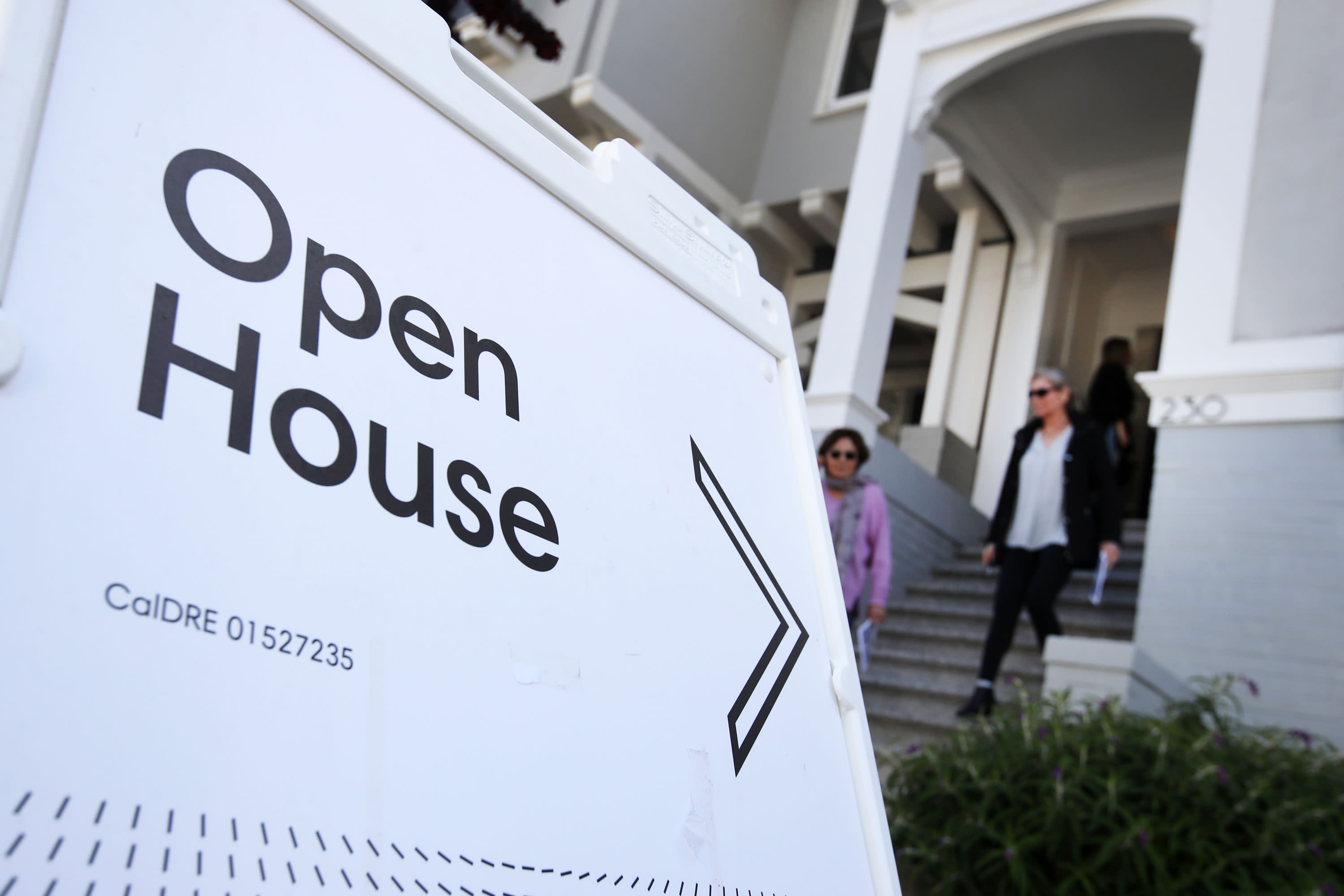
Real estate agents leave a home for sale during a broker open house in San Francisco, California.
Justin Sullivan | Getty Images
Anyone out there searching for a new place to live knows there is not much to buy. Total supply and new listings are at record lows, and that means that what is on the market now is selling fast. Really fast.
The average home spent just 61 days on the market, according to a January reading from Realtor.com. That is the fastest pace Realtor.com has recorded since it began tracking the metric in 2016. It’s 10 fewer days than at the rate recorded in January 2021 and 29 fewer than the 2017-20 pace.
Homes sold even faster in several metropolitan markets. In Nashville, the average was just 29 days. In Denver, 35 days. The pace was 38 days in Las Vegas and 39 days in Seattle.
Markets in the South saw the biggest yearly decline in the number of days it took to sell a home. Meanwhile markets like Minneapolis, Richmond and Washington, D.C., saw the time on the market increase slightly.
The days are calculated from the day of listing to the closing date. Closings can take a while, especially given the labor shortage in the market. It is common to hear, anecdotally, that homes are going under contract in less than a week after multiple offers.
Competition appears to be unusually fierce for January, which is usually one of the slowest months in the housing market. The spring market generally kicks off with President’s Day weekend. Rising mortgage rates during the month may have scared potential buyers into stepping up their searches before rates price them out.
The market is suffering from super lean supply. Builders are still hamstrung by rising costs for land and materials, as well as a severe labor shortage. And sellers are simply not stepping up. New listings in January were down 9% year-over-year. Total inventory was down 28%.
“Factors like Omicron uncertainties could be causing sellers to hesitate even when they know housing conditions are favorable,” said Danielle Hale, chief economist at Realtor.com. “Another key barrier is the inventory ‘chicken-and-egg’ dilemma that may vex sellers who are also buying: Do you list now when home shoppers are hungry for more options, or do you wait for more inventory to hit the market in the spring?”
Rising mortgage rates may also be keeping some potential sellers from making a move. The majority of homeowners with a mortgage now have a rate under 3%. The average on the 30-year fixed mortgage is now heading toward 4%. Current homeowners may not like the idea of paying more for the same debt they have now.
As rates rise, they also lose purchasing power. Home prices continue to rise at a fast pace, and in fact the gains in prices are still increasing. The expectation is that prices will cool as the number of sales drops. Homes are selling faster now, but fewer homes are selling, due to that short supply. Builders are also actively slowing sales of their own homes to make sure they can deliver them on time.
“With demand continuing to significantly outpace supply, we maintained our disciplined sales strategy by managing sales in the vast majority of our communities to align our sales and production cadence and maximize community performance,” wrote Sheryl Palmer, CEO of homebuilder Taylor Morrison in its latest earnings release.




